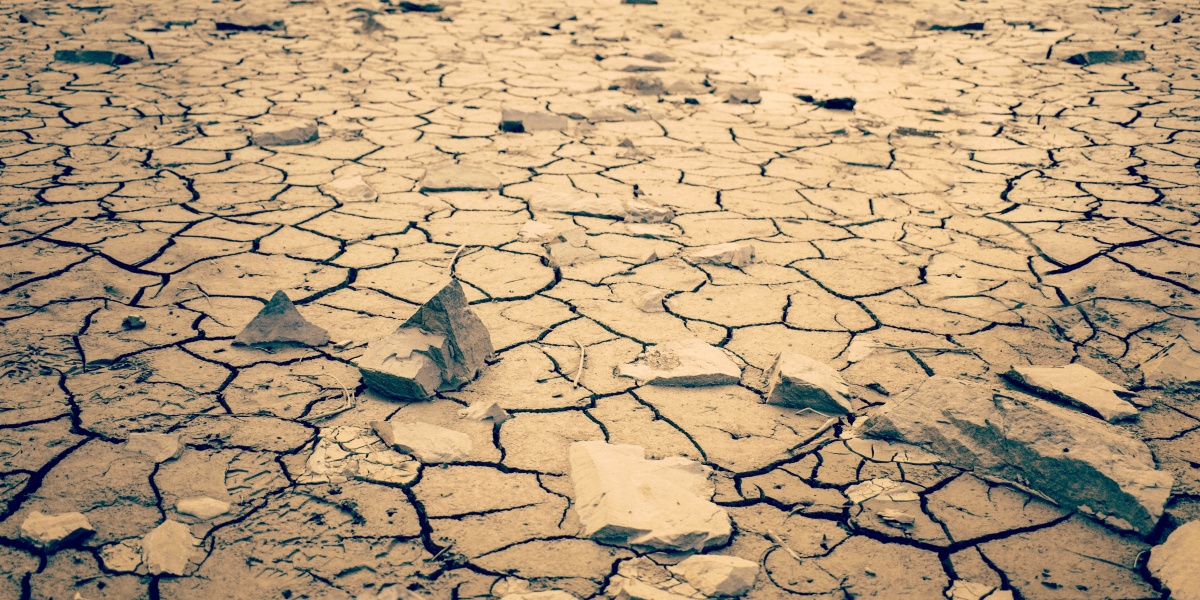Kapanlagi.com - The dry season of 2025 has made its debut since April and is predicted to continue expanding until mid-year. Although its duration is expected to be shorter compared to previous years, the threat of drought still looms in several strategic areas in Indonesia. This is an important signal for the agricultural sector, energy, and disaster management to prepare for the peak of drought expected to occur between June and August.
Unlike 2023, which was influenced by a strong El Niño phenomenon, this dry season is occurring under neutral global climate conditions, both in the Pacific and Indian Oceans. However, warmer-than-usual sea surface temperatures could trigger local weather disturbances in Indonesia. This has the potential to impact agricultural dynamics, clean water availability, and increase the risk of forest and land fires in several areas.
Predictions generated based on monitoring more than 500 seasonal zones in Indonesia indicate that the dry season will not occur simultaneously. Some regions, such as Sumatra and Kalimantan, will experience an earlier dry season, while other areas may face delays from the normal pattern. Although this dry season will not last as long as last year, the public and stakeholders are reminded to remain vigilant against the threats of drought and declining air quality.
Stay tuned for the latest information regarding this dry season, summarized from KapanLagi.com, Monday (14/4).
Together, we can face this challenge more prepared!
1. The Dry Season Begins in April
This year's dry season officially began in April 2025, with 115 Climate Zones (ZOM) gradually entering the dry period, and this phenomenon is expected to extend into May and June, covering areas such as Java, Bali, Kalimantan, and Papua. According to the Head of BMKG, Dwikorita Karnawati, the start of this dry season does not occur simultaneously across the regions, with some areas experiencing significant schedule changes—some advancing, some delaying, or remaining normal—which will certainly affect the production sector and public services.
Meanwhile, the regions of Sumatra, parts of Kalimantan, and Sulawesi show variations in the start of the dry season, influenced by sea surface temperatures and humidity, which are key in cloud formation and seasonal wind patterns.
"The start of the dry season in Indonesia is predicted not to occur simultaneously. In April 2025, as many as 115 Climate Zones (ZOM) will enter the dry season. This number will increase in May and June, as the affected areas expand, including most of Java, Bali, Nusa Tenggara, Kalimantan, and Papua," she said, quoted from the official BMKG website on Monday.
2. The 2025 Drought is Predicted to be Shorter Without Climate Disruptions in the Ocean
The year 2025 brings interesting news in the world of Indonesian weather, where the El Nino phenomenon and the Indian Ocean Dipole (IOD), which usually play a role in regulating extreme drought seasons, are now in neutral conditions. This has the potential to make this drought season shorter in most regions, although some areas like Sumatra and Kalimantan are expected to experience a longer drought than usual. With warmer sea surface temperatures, there is a risk of local disruptions that need to be monitored.
Although the 2025 drought season appears more stable, uneven rainfall patterns could lead to varying impacts in critical sectors such as agriculture, energy, and water resource management. As experts have stated,
“The duration of the drought is predicted to be shorter than usual in most regions, although 26% of the area will experience a longer drought, especially in parts of Sumatra and Kalimantan,” they said.
3. The Peak of the Dry Season Occurs in June to August
The peak of the dry season in Indonesia is expected to hit nationally from June to August 2025, with August being the most critical month that will sweep across most regions with the worst drought. In North Sulawesi, areas such as Bolaang Mongondow, Minahasa, Manado, and Bitung will feel the heaviest impact, where the weather tends to be stable with no rain and very low humidity. This condition poses a significant challenge for the agriculture and forestry sectors, as the low rainfall can increase the risk of crop failure and trigger forest and land fires, especially in areas with limited groundwater reserves and a lack of reservoir infrastructure.
4. Regions Experiencing Three Main Categories of Drought in Indonesia
The distribution of the 2025 dry season is divided into three main categories based on the intensity of dryness, and each region faces different challenges that need to be understood specifically.
Regions with Normal Dry Season
- Regions classified as having a normal dry season will experience rainfall and drought duration in line with the annual climatological average, with consistent seasonal patterns like previous years. This area includes most of Sumatra, eastern Java, Kalimantan, Sulawesi, Maluku, and Papua, where the dry season is expected to last for three to four months with non-extreme transitions. Despite being on a normal trajectory, this region must still prepare for the possibility of local extreme weather that could occur due to fluctuations in temperature and humidity.
Regions with Drier than Normal Dry Season
- Some regions of Indonesia will experience a drier dry season compared to average conditions, with very low rainfall, high temperatures, and longer durations without rain. Affected areas include northern Sumatra, a small part of West Kalimantan, parts of central Sulawesi, North Maluku, and southern Papua. In this context, the main risks include land drought, disruptions in clean water supply, increased potential for forest and land fires (karhutla), and the potential for crop failure due to insufficient water during critical growth phases.
Regions with Wetter than Normal Dry Season
- This category includes areas that continue to receive relatively high rainfall even during the dry season, which can open opportunities for agricultural production if utilized properly. Regions included are a small part of Aceh, most of Lampung, western and central Java, Bali, NTB, NTT, as well as some areas in central Sulawesi and Papua. This condition has the potential to provide benefits for the agricultural sector by extending the planting season, but caution is still needed as humid weather can also trigger faster growth of plant pests and diseases.
5. Mitigation and Anticipation Measures in Facing the 2025 Dry Season
To minimize the negative impacts of the dry season, various mitigation measures need to be implemented across sectors with a region- and local risk-based approach.
Adjustment of Planting Schedules and Crop Varieties
- The first recommended step is to adjust planting schedules based on early predictions of the dry season in each regional zone. Farmers are urged to choose drought-resistant crop varieties such as gogo rice or superior drought-resistant corn, and to adjust planting times to avoid conflicts with the peak of the dry season. This aims to maintain agricultural productivity and avoid crop failure due to water stress on plants.
Optimization of Water Infrastructure and Reservoirs
- Local governments and communities need to optimize reservoirs, boreholes, and micro-irrigation as water reserves during the dry season. Filling reservoirs and water storage should be done while rainfall is still available, especially in drought-prone areas that lack sufficient surface water access. This infrastructure becomes very important to support agricultural needs, household consumption, and forest and land fire extinguishing efforts.
Enhancement of Preparedness for Forest and Land Fires
- A drier dry season in several regions increases the risk of forest and land fires. Therefore, mitigation measures such as wetting peatlands, increasing field patrols, and utilizing early warning systems must be intensified, especially in vulnerable areas like Kalimantan, Riau, and Papua. These efforts must be made before the rainfall completely stops to ensure more effective forest and land fire control.
Air Quality Management and Public Health
- The air conditions during the dry season have the potential to deteriorate drastically, particularly in urban areas and industrial zones with high activity. The government and the community need to raise awareness of the importance of maintaining air quality, including the use of masks, reducing open burning, and providing additional health services to anticipate respiratory diseases and the impact of high temperatures on vulnerable groups.
Water Resource Management for Energy and Consumption
- The energy and clean water sectors face unique challenges during the dry season, particularly in maintaining supply for hydropower plants (HPP) and raw water distribution networks. Water use efficiency, diversification of energy sources, and increasing storage capacity and monitoring of river water flow must be the main focus in medium-term adaptation strategies. This step is important to ensure that public services continue to operate optimally even amid the pressures of the dry season.
“For regions experiencing wetter dry seasons, this could be an opportunity to expand planting areas and increase production, along with controlling potential pests,” added Dwikorita.
6. Questions and Answers (People Also Ask Google)
When does the dry season of 2025 start in Indonesia?
The dry season of 2025 begins in April gradually across various regions and expands in May to June.
Will the dry season of 2025 be worse than the previous year?
No, this year's dry season is predicted to be shorter and not as dry as 2023 due to no influence from El Niño or IOD.
Which areas will experience the most extreme peak of drought?
The regions of East Java, Nusa Tenggara, Sulawesi, and Maluku are expected to experience the worst peak of drought in August.
What is the impact of the 2025 drought on the agricultural sector?
Farmers are advised to adjust planting schedules, choose drought-resistant varieties, and manage water more efficiently during the drought.
What are the main mitigation steps to face the 2025 dry season?
Mitigation includes filling water reservoirs, wetting peatlands, and managing water supply for the energy and consumption sectors.
(kpl/mni)
Disclaimer: This translation from Bahasa Indonesia to English has been generated by Artificial Intelligence.












